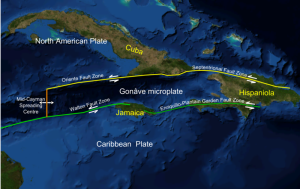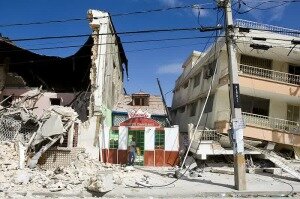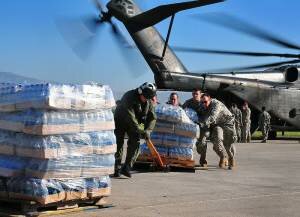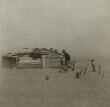In this article we will talk facts about the Haiti Earthquake happened in 2010. This kind of earthquake was categorized as a catastrophic magnitude 7.0 Mw earthquake, with an epicenter near the town of Léogâne (Ouest Department), approximately 25 kilometers west of Port-au-Prince, Haiti’s capital. It happened in the afternoon at 16:53 local time (21:53 UTC) on Tuesday, 12 January 2010. You can check the following list below to know more facts about it.
Facts about the Haiti Earthquake 1: Has Destructive Disaster Histories
Haiti is seismically active and has a history of destructive earthquakes. Besides earthquakes, it has been struck frequently by tropical cyclones, which have caused flooding and widespread damage. The most recent cyclones to hit the island before the earthquake were Tropical Storm Fay and Hurricanes Gustav, Hanna and Ike, all in the summer of 2008.
Facts about the Haiti Earthquake 2: Cause
It was said that the earthquake quake was caused by a rupture of the Enriquillo-Plantain Garden fault, which had been locked for 250 years, gathering stress. However, a study published in May 2010 suggested that the event only partially relieved centuries of accumulated left-lateral strain on a small part of the plate-boundary system.
Facts about the Haiti Earthquake 3: Aftershocks
Within the first nine hours 32 aftershocks of magnitude 4.2 or greater were recorded, 12 of which measured magnitude 5.0 or greater. By 24 January, at least 52 aftershocks measuring 4.5 or greater had been recorded. Find more facts about the Great Exhibition here
Facts about the Haiti Earthquake 4: Tsunami
Nearly two weeks later it was reported that the beach of the small fishing town of Petit Paradis was hit by a localized tsunami shortly after the earthquake, probably as a result of an underwater slide, and this was later confirmed by researchers.
Facts about the Haiti Earthquake 5: Damage to Medical Facilities
The earthquake influenced the three Médecins Sans Frontières (Doctors Without Borders) medical facilities around Port-au-Prince, causing one to collapse completely, A hospital in Pétionville, a wealthy suburb of Port-au-Prince, also collapsed, as did the St. Michel District Hospital in the southern town of Jacmel, which was the largest referral hospital in south-east Haiti
Facts about the Haiti Earthquake 6: Damage to Buildings
Major damage happened in Port-au-Prince, Jacmel and other settlements in the region because of the earthquake. Notable landmark buildings were significantly damaged or destroyed, including the Presidential Palace, the National Assembly building, the Port-au-Prince Cathedral, and the main jail.
Facts about the Haiti Earthquake 7: Damage to Communication Infrastructure
The earthquake also caused the damage to communication infrastructure. The public telephone system was not available and two of Haiti’s largest cellular telephone providers, Digicel and Comcel Haiti, both reported that their services had been affected by the earthquake. Fibre-optic connectivity was also disrupted.
Facts about the Haiti Earthquake 8: Effect on Education
Minister of Education of Haiti stated that the education system had “totally collapsed”. About half the nation’s schools and the three main universities in Port-au-Prince were affected. More than 1,300 schools and 50 health care facilities were destroyed. The earthquake also destroyed a nursing school in the capital and severely damaged the country’s primary midwifery school.
Facts about the Haiti Earthquake 9: Mass Graves
The government buried many people in mass graves, some above-ground tombs were forced open so bodies could be stacked inside, and others were burned. Mass graves were dug in a large field outside the settlement of Titanyen, north of the capital; tens of thousands of bodies were reported as having been brought to the site by dump truck and buried in trenches dug by earth movers. Find more facts about the Gettysburg Address here
Facts about the Haiti Earthquake 10: Response
Many countries responded to the appeals and launched fund-raising efforts, as well as sending search and rescue teams. The neighboring Dominican Republic was the first country to give aid to Haiti, sending water, food and heavy-lifting machinery. Other nations from farther afield also sent personnel, medicines, materiel, and other aid to Haiti.
If you think those facts about the Haiti Earthquake are interesting, leave us comment and keep reading the others facts.









